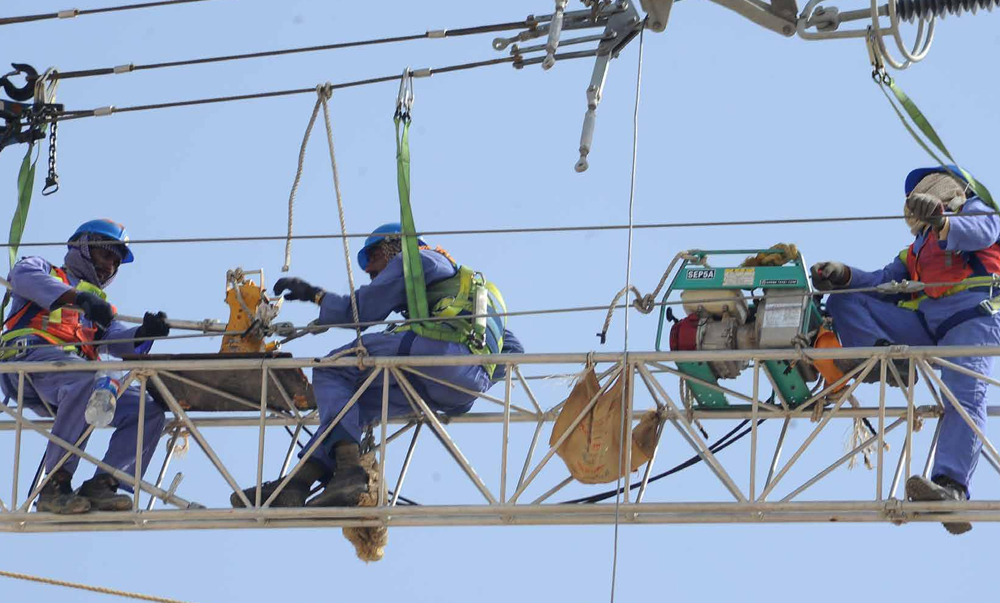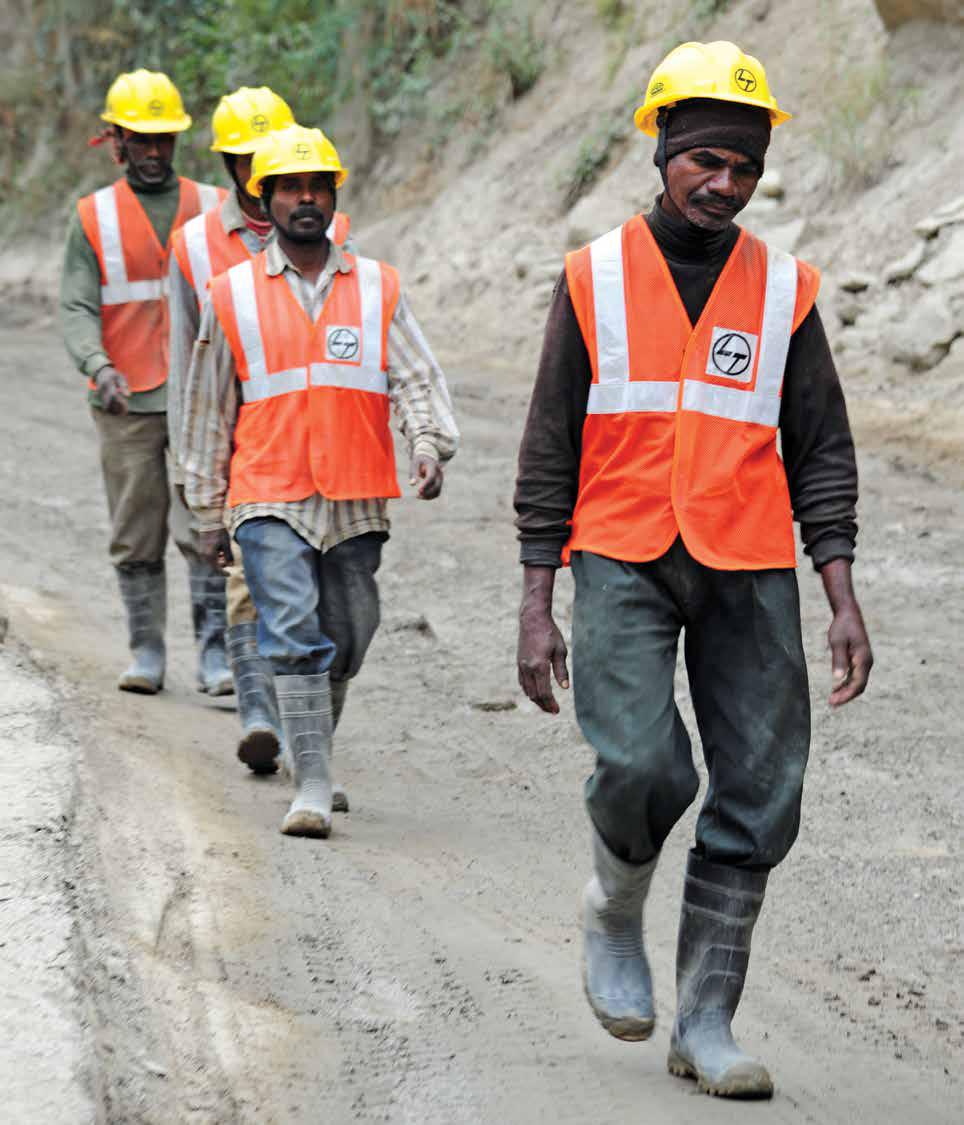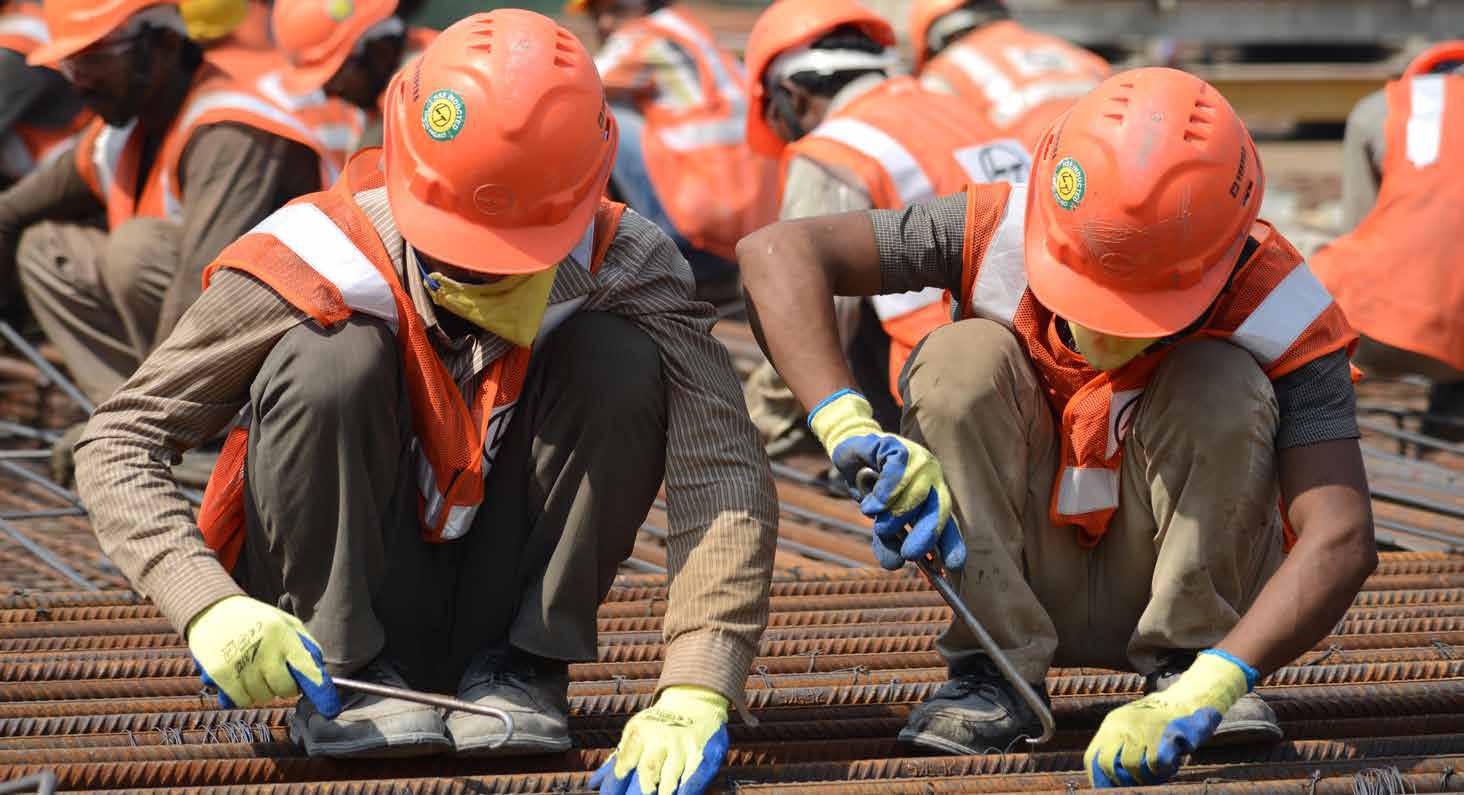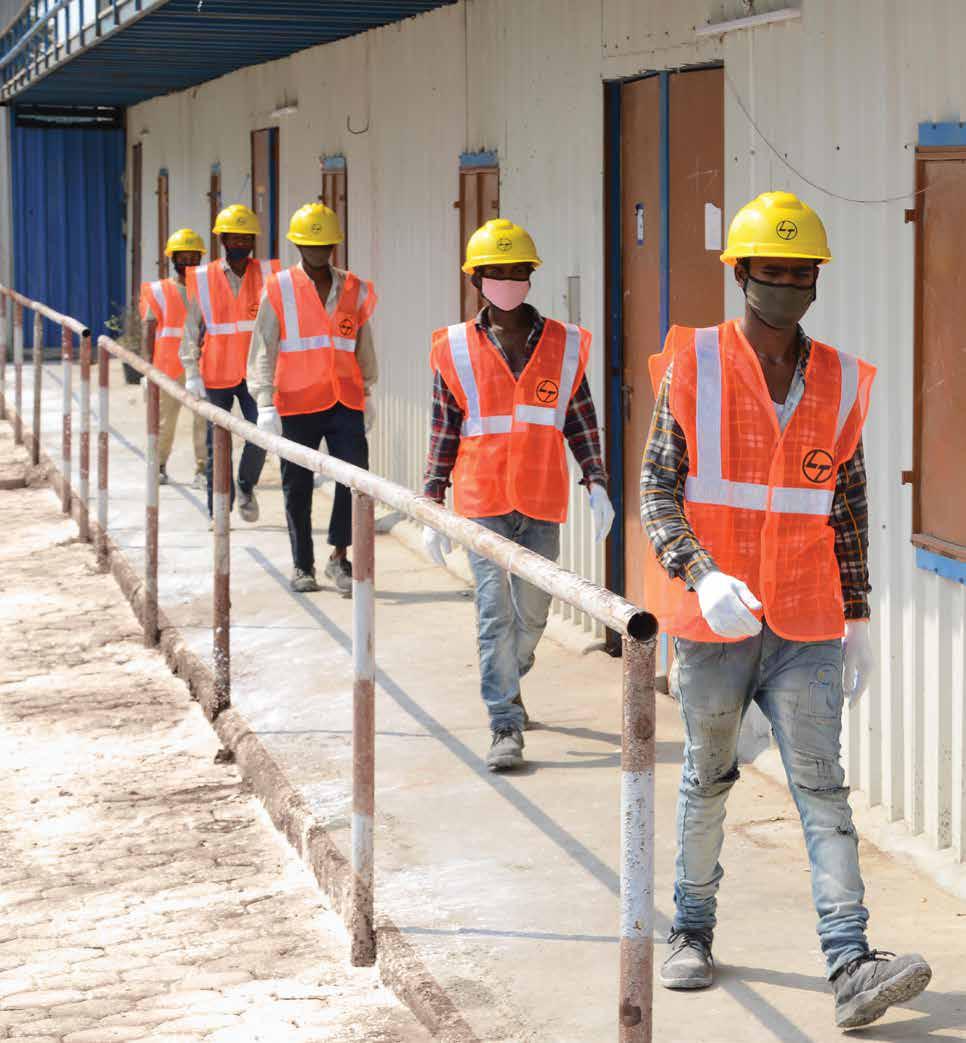To put your best foot forward, you first need to keep it safe!
Choose your footwear carefully.
It is said that a person normally walks about 5,000–6,000 steps a day. That is about 180,000 steps a month and approximately 22 lakh steps a year – meaning 22 lakh instances to be careful to remain safe on one’s feet. At a construction site, where people are constantly on their feet and on the move, they end up walking a lot more than others. “On most days, by the time we complete one round of our site, we would have walked about 18,000–19,000 steps,” informs V Ramesh, Project Director at the B&F IICC project site in Delhi.
Research reveals that 40% of injuries and illnesses occur to hands and feet and, along with injuries due to sprains, strains, and tears, add up to a fair bit that can cumulatively impact execution and project delivery. Hence, it is imperative to have a ‘Foot Safety Protection Programme’ that covers selection, fit testing, training, maintenance, and inspection. Safety footwear is designed to protect feet against a wide variety of injuries with impact, compression, and puncture being the most common types. The choice of footwear should be dictated by the hazard present, possess the proper rating for the hazard, and be procured from certified footwear manufacturers.

Wearing the right footwear when working at heights
“Foot protection is key but often neglected,” points out P Nagarajan, Head – EHS, B&F IC. “Underfoot conditions at most sites are tricky, for we deal with different elevations, debris on the ground, unexpected openings, improperly stacked material, and more. One small wrong step can be disastrous, so it is critical to wear good, sturdy boots with adequate ankle protection.”
A construction workman is in an environment in which heavy objects such as barrels or tools might roll or fall on to his feet; he is working with sharp objects such as nails or spikes that could pierce the soles or uppers of ordinary shoes; he is sometimes exposed to molten metal that can splash onto his feet or legs; he could be working on or around hot, wet, or slippery surfaces, and in the vicinity of electrical hazards. Footwear, therefore, needs to be carefully chosen.

Underfoot conditions at most sites are tricky, for we deal with different elevations, debris on the ground, unexpected openings, improperly stacked material, and more. One small wrong step can be disastrous, so it is critical to wear good, sturdy boots with adequate ankle protection.
P Nagarajan
Head – EHS, B&F IC
Choosing the right footwear
Over the years, foot protection has evolved past the tried-and-true leather steel-toe boot to include a variety of features including fibre-toe, waterproof, electrical-resistant, and punctureresistant designs. There is a classification of footwear as per IS 15298-part 2 (Safety, Protective, and Occupational Footwear for Professional Use) based on the design, i.e. Design A: low shoe, Design B: ankle boot, Design C: half knee boot, Design D: knee-high boot, and Design E: thigh boot.

A good safety shoe is one that gives good balance, sits comfortably on the workman’s foot, enables him to move freely and climb up or down easily and, of course, protects his feet.
T Prabhakar
Head – EHS, PT&D IC
Surprisingly, selecting the right footwear that is comfortable, is compliant to International Standards/Bureau of Indian Standards, and offers the right protection could be a challenge for a workman, and it is the responsibility of EHS personnel to guide workmen to make the right choice. “A good safety shoe is one that gives good balance, sits comfortably on the workman’s foot, enables him to move freely and climb up or down easily and, of course, protects his feet,” explains T Prabhakar, Head – EHS, PT&D IC. Certainly, the safety shoe must be best suited for the prevailing conditions, he adds, for one that is perfect at projects in the sands of the Middle East would be unfit for Prabhakar’s people working on PT&D projects in the hot, wet jungles of Africa.

As with choosing any other safety equipment, a proper analysis must first be conducted when choosing the footwear vis-à-vis the environment: proximity to electrical wiring, wet or marine conditions, areas prone to falling objects, and such like. Crushed, broken, and amputated toes or feet are the most common types of foot injuries, caused when feet are trapped between objects, crushed by objects, or run over by vehicles or equipment. Specialized boots are expensive, but it pays to go for the best because the loss one incurs if one does not far outweighs the initial savings.
“Due to considerations of cost and speed, project management may sometimes opt for a one-size-fits-all approach, but that is asking for trouble,” warns Nagarajan, who advocates that it is important to make the right choices when it comes to anything related to safety. Safety shoes should ideally have impact-resistant toes and heat-resistant soles to protect the feet against hot work surfaces common in roofing, paving, and hot metal industries. The metal insoles protect against puncture wounds. These can also be electrically conductive to prevent the build-up of static electricity in areas with the potential for explosive atmospheres or nonconductive to protect employees from workplace electrical hazards. Safety shoes should be used in combination with shin guards and toe guards for greater protection.


As part of PPE standardization, the specifications of safety shoes for our employees and workmen have been standardized:
- Leather safety footwear with direct injection moulded, polyurethane (PU) sole – single/ double density, with steel/fibre toe
- Leather safety footwear with directinjected PVC (DIP) soles, with steel/fibre toe and ISI certified

Look after your footwear to stay safely on your feet
Choosing the right footwear is the first critical step; regular cleaning, inspecting, and maintaining are equally crucial next steps. One must check for cracks or stains on the mid sole; frayed or ripped leather or fabric; lack of traction of tread on the outer sole; damaged, ripped, or worn insole; or water seepage into the work boot. Replacing the insole is one way to make the boot last longer; another way is to have two pairs that can be used alternatively.
How to keep your feet and legs safe
- Safety-toed shoes or boots protect against falling, crushing, or rolling hazards. Safety-toed footwear must meet the minimum compression and impact performance standards in ANSI Z41-1999 / IS 15298-part 2 / EN ISO 20345 or provide equivalent protection.
- Metatarsal guards protect the instep area from impact and compression. Made of aluminium, steel, fibre, or plastic, these guards can be strapped to the outside of regular work shoes.
- Toe guards fit over the toes of regular shoes to protect the toes from impact and compression hazards. They may be made of steel, aluminium, or plastic.
- Rubber overshoes are used for concrete work and areas where flooding is a concern.
- Shoes with slip-resistant soles are required for certain departments and should be used in areas where slips and falls on wet floors are most likely.
- Leggings protect the lower legs and feet from heat hazards such as molten metal or welding sparks. Safety snaps allow leggings to be removed quickly.
Protective footwear is to protect workmen and personnel from accidents and not to prevent accidents, so the basic dictates of EHS stand firm: think construction, think safety. Only then can we achieve Mission Zero Harm.